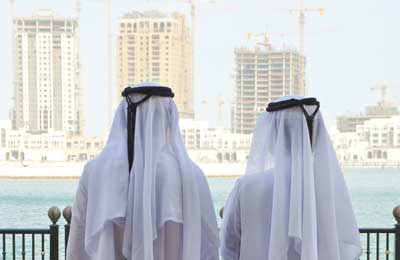
Mena economy to grow 3.6pc in 2013
Doha, October 13, 2012
The global economic outlook looks more downbeat as global economies struggle with low real GDP growth. However, the prospects for the Mena region have brightened due to higher oil prices and increased government spending, said a report.
The global real GDP growth has been revised downwards to 3.3 per cent in 2012 and to 3.6 per cent in 2013. The growth outlook for global economy has deteriorated as the recovery in the 35 advanced economies has remained weaker than expected, said top Qatar National Bank (QNB) Group in its review of the IMF’s October world economic outlook.
As advanced economies account for 51.1 per cent of global GDP, this has caused a major drag on the world economy. Real GDP forecasts for 2012-13, the QNB said on the IMF review released in Tokyo.
GDP growth for the advanced economies has been cut by 0.5 per cent to 1.5 per cent in 2013. The main factors holding growth back in advanced economies is the implementation of austere fiscal policies to reduce deficits.
The IMF has warned these austere measures could impact sustainable long term growth. Another key factor is the weak loan growth disbursed through the banking system due to risk averseness, despite an accommodative monetary policy that supports growth.
The US, the world’s largest economy, is now forecast to a reduced growth of 2.1 per cent in 2013 due to both external and domestic risks, the report stated.
The second engine for global growth comes from developing Asia, which accounts for 25 per cent of global GDP. The growth forecast for developing Asia has also been reduced by 0.3 per cent to 7.2 per cent in 2013 owing to weaker external demand and concerns on domestic demand in China.
The QNB report said the prospects for Mena region are bright with a forecast growth of 5.3 per cent in 2012 and 3.6 per cent in 2013. "The growth in the Mena region is two-dimensional; with a clear distinction between oil exporters and importers," it added.
The gap in the growth outlook between them has widened. While growth prospects for oil exporters have improved to 6.6 per cent in 2012 (up from 4.8 per cent in the April 2012 forecast), the prospects for oil importers have substantially declined to 1.2 per cent in 2012 (down from 2.2 per cent in the April 2012 forecast).
Higher oil prices and increased government spending have been the key differentiating factor that has brightened the growth prospects for oil exporting countries.
The outlook for oil importing countries remains subdued as political turmoil and change have led to declining economic activity, the QNB stated.
Looking at oil prices based on the futures market, the IMF has revised downwards its oil price assumptions to $106.2/b in 2012 and $105.1/b in 2013, from $114.7/b and $110.0/b respectively in the April 2012 forecast.
The supply increases from Saudi and the US and the worsening outlook for global growth, and hence oil demand, have led to lower expectations for oil prices. Further downside risks to oil prices are posed through weak demand from Asia and Europe according to QNB Group.-TradeArabia News Service







